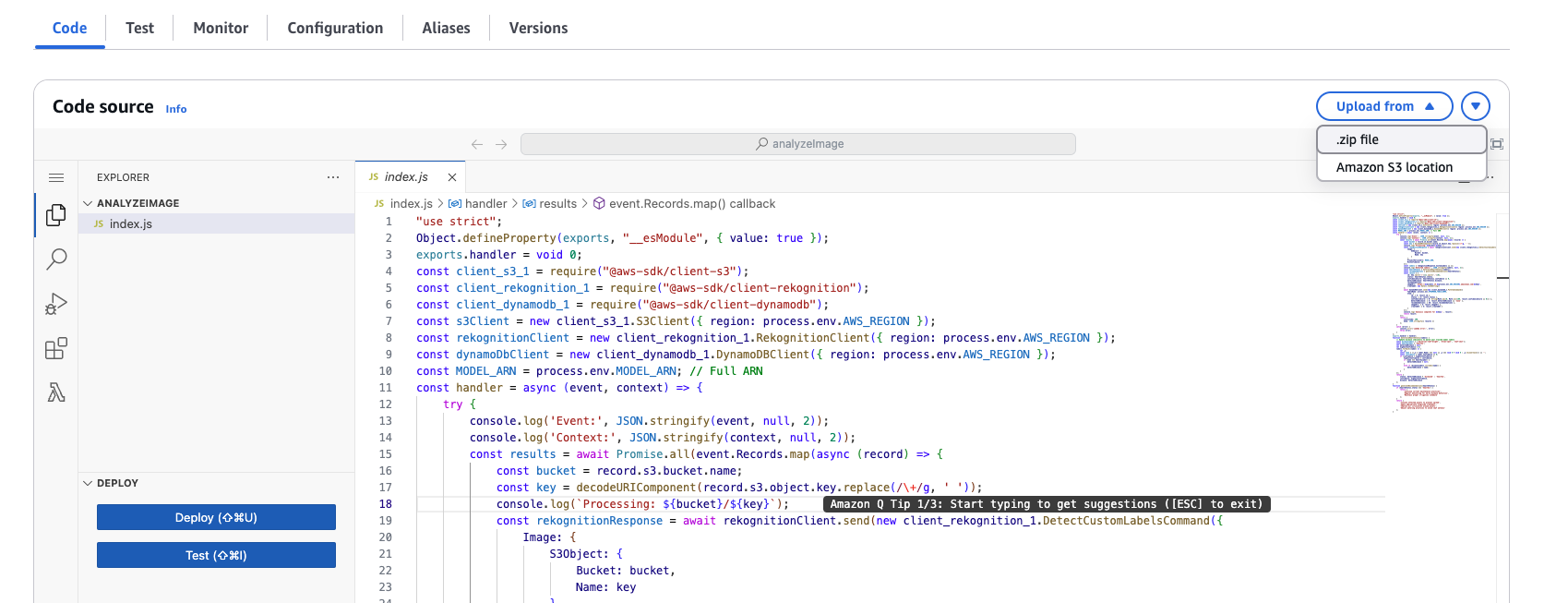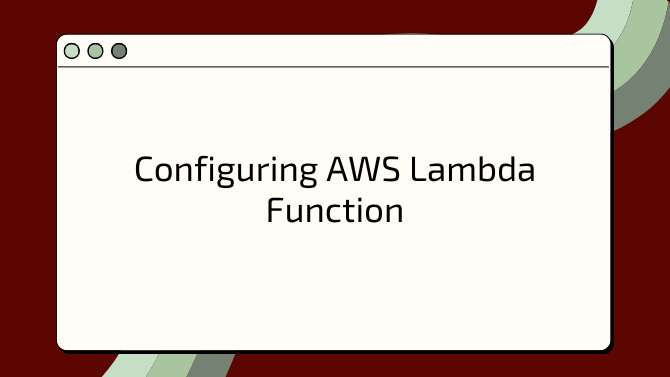Configuring AWS Lambda for Rice Leaf Disease Detection
This guide walks through setting up an AWS Lambda function that processes rice leaf images using AWS Rekognition and stores results in DynamoDB.
Prerequisites
- AWS Account with administrative access
- S3 bucket already configured (refer to S3 setup guide)
- DynamoDB table created (refer to DynamoDB setup guide)
- Rekognition model already trained and deployed (refer to Rekognition setup guide)
- Basic understanding of JavaScript/Node.js
The Lambda function for this project is responsible for the following tasks:
- Triggering on S3 events: When a new image is uploaded, an S3 event automatically triggers the Lambda function.
- Processing images: The function retrieves the image from S3, sends it to AWS Rekognition Custom Labels for analysis, and parses the returned labels.
- Storing results: The analysis results (detected disease, confidence score, and recommendations) are saved in DynamoDB for later retrieval by the frontend.
Step 1: Create IAM Role for Lambda
We need to create an IAM role that grants Lambda necessary permissions to access S3, AWS Rekognition, and DynamoDB, as well as to write logs to CloudWatch.
-
Navigate to IAM in AWS Console
-
Click “Roles” → “Create role”
-
Select “AWS Service” and choose “Lambda”
-
Click “Next: Permissions”
-
Attach these managed policies:
AWSLambdaBasicExecutionRole- This policy allows Lambda to write logs to CloudWatch.
-
Then create a custom policy for S3, Rekognition, and DynamoDB access:
{
"Version": "2012-10-17",
"Statement": [
{
"Effect": "Allow",
"Action": [
"s3:GetObject",
"s3:PutObject",
"s3:ListBucket"
],
"Resource": [
"arn:aws:s3:::agrovision-image-app",
"arn:aws:s3:::agrovision-image-app/*"
]
},
{
"Effect": "Allow",
"Action": [
"rekognition:DetectCustomLabels"
],
"Resource": "arn:aws:rekognition:REGION:ACCOUNT_ID:project/PROJECT_NAME/version/VERSION_ID"
},
{
"Effect": "Allow",
"Action": [
"dynamodb:PutItem",
"dynamodb:GetItem",
"dynamodb:Query"
],
"Resource": "arn:aws:dynamodb:REGION:ACCOUNT_ID:table/TABLE_NAME"
}
]
}
Replace the REGION, ACCOUNT_ID, PROJECT_NAME, and TABLE_NAME with your own values.
- Name the role (e.g.,
analyzeImage-role) - Review and create the role
Step 2: Create Lambda Function
- Go to AWS Lambda console
- Click “Create function”
- Configure basic settings:
- Name:
processRiceImage - Runtime: Node.js 22.x
- Architecture: x86_64
- Role: Select the role created in Step 1
- Name:
- Click “Create function”
Step 3: Lambda Function Code
Because Node.js doesn’t run TypeScript code natively, we need to transpile the TypeScript code into JavaScript. Then, use the JavaScript files to deploy the function code to Lambda. Read more
You will need to navigate to the lambda/analyzeImage folder in the cloned repo on local environment and upload the already created function.zip file to Lambda.

This function is triggered by an S3 event and handles the image processing workflow end-to-end.
Step 4: Configure Environment Variables
In the Lambda function configuration:
- Scroll to “Environment variables”
- Add these variables:
MODEL_ARN: Your Rekognition model ARN. Make sure it is the full ARN you’re using.DYNAMODB_TABLE_NAME: Your DynamoDB table name.
Step 5: Set Up S3 Trigger
-
Go to S3 bucket
-
Properties → Event notifications
-
Create event notification:
- Name:
TriggerRiceDetection - Event types: All object create events
- Prefix:
uploads/ - Suffix:
.jpgor.png - Destination: Lambda function
- Function: Select your Lambda function

- Name:
Alternatively, you can configure the trigger from S3:
- In the Lambda function page:
- Click “Add trigger”
- Select “S3”
- Choose your bucket
- Event type:
s3:ObjectCreated:* - Prefix:
uploads/ - Suffix:
.jpgor.png - Acknowledge the recursive trigger warning
- Click “Add”
Testing the Setup
-
Upload a test image to your S3 bucket:
aws s3 cp test-image.jpg s3://your-bucket-name/uploads/ -
Check CloudWatch logs for execution results
-
Verify DynamoDB for the entry
-
Test the entire flow through your application
Refer to other tutorials in this series for setting up additional AWS services like S3, DynamoDB, Lambda, Rekognition, and Amplify to host the frontend.
